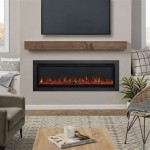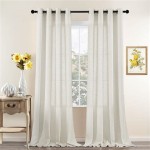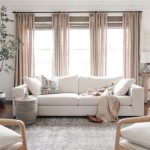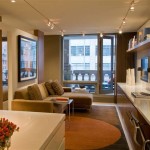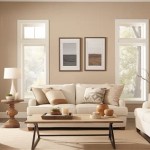Optimizing Living Room Design: The Couch and Recliner Setup
The living room often serves as the central hub of a home, functioning as a space for relaxation, entertainment, and social interaction. Selecting the right furniture arrangement is crucial for maximizing comfort and functionality. A popular configuration involves combining a couch and recliner(s), offering versatility for varied activities and preferences. This article explores key aspects of establishing an effective living room setup utilizing a couch and recliner(s), focusing on spatial considerations, style coordination, and practical utilization.
Spatial Planning and Arrangement
The foundation of a successful living room setup lies in careful spatial planning. Before purchasing furniture or making layout changes, it is essential to measure the room's dimensions accurately. This includes the length, width, and height, as well as the placement of windows, doors, and any architectural features that might influence furniture placement. Understanding the available space is paramount in avoiding overcrowding and ensuring ease of movement within the room.
Once the room's dimensions are known, the next step involves determining the focal point. The focal point is the primary visual element that draws attention upon entering the room. This could be a fireplace, a large window with a scenic view, a built-in entertainment center, or even a statement piece of artwork. The couch and recliner(s) should be positioned in relation to the focal point to create a sense of balance and visual harmony. Typically, the couch is placed facing the focal point, serving as the primary seating area. Recliners can then be strategically positioned to complement the couch, either flanking it on either side or placed at an angle to encourage conversation.
Traffic flow is another critical consideration in spatial planning. The furniture arrangement should allow for easy movement throughout the room, preventing obstructions and bottlenecks. Creating clear pathways ensures that occupants can navigate the space comfortably without having to squeeze between furniture pieces. This can be achieved by leaving ample space between the couch, recliners, and other furniture items, such as coffee tables and side tables. Ideally, a minimum of 30 inches of clearance should be maintained for walkways. Furthermore, the placement of area rugs can help define the seating area and further delineate traffic patterns.
Moreover, consider the functionality of the space when arranging the furniture. If the primary purpose of the living room is entertainment, then the couch and recliner(s) should be positioned to provide optimal viewing angles for the television or entertainment system. If the room is primarily used for conversation, then the furniture should be arranged in a way that facilitates interaction. Creating a circular seating arrangement can encourage dialogue and create a more intimate atmosphere. If the room is used for both entertainment and conversation, a more flexible arrangement may be required, allowing for easy adjustments depending on the activity.
Style and Aesthetic Coordination
Beyond spatial considerations, the aesthetic appeal of the living room setup is crucial for creating a cohesive and inviting environment. The style of the couch and recliner(s) should complement the overall design scheme of the room, whether it be traditional, modern, contemporary, or eclectic. Selecting furniture that reflects the desired aesthetic will contribute to a harmonious and visually pleasing space. It is important to consider factors such as the shape, color, material, and detailing of the furniture.
Color coordination is a fundamental aspect of interior design. The color of the couch and recliner(s) should complement the existing color palette of the room, including the walls, flooring, and other decorative elements. A common approach is to select a neutral color for the couch, such as beige, gray, or white, and then incorporate accent colors through the use of throw pillows, blankets, and other accessories. This allows for greater flexibility in updating the room's décor over time without having to replace the major furniture pieces. Alternatively, a bolder color can be used for the couch or recliner(s) to create a statement piece and add visual interest to the room.
Material selection is another important consideration. The material of the couch and recliner(s) should be durable, comfortable, and easy to maintain. Common materials include leather, fabric, and microfiber. Leather offers a luxurious and sophisticated look, while fabric provides a softer and more comfortable feel. Microfiber is a durable and stain-resistant option that is well-suited for households with children or pets. The choice of material will also influence the overall style of the room. For example, leather is often associated with traditional or contemporary styles, while fabric is more commonly used in casual or eclectic designs.
Adding decorative elements, such as throw pillows, blankets, and area rugs, can further enhance the aesthetic appeal of the living room setup. Throw pillows and blankets can add color, texture, and pattern to the room, creating a more visually interesting and inviting space. Area rugs can define the seating area and add warmth and comfort to the room. The selection of decorative elements should be carefully considered to ensure that they complement the overall style and color palette of the room. Incorporating personal touches, such as artwork, photographs, and decorative objects, can also add character and personality to the space.
Practical Utilization and Functionality
The ultimate goal of a living room setup is to create a functional and comfortable space that meets the needs of the occupants. The placement of the couch and recliner(s) should not only be aesthetically pleasing but also practical and conducive to various activities. Consider the intended use of the room and arrange the furniture accordingly. For example, if the room is primarily used for watching television, then the couch and recliner(s) should be positioned to provide optimal viewing angles. If the room is primarily used for reading, then a comfortable recliner with adequate lighting should be prioritized.
Storage solutions are an essential component of a functional living room. Incorporating storage furniture, such as coffee tables with storage compartments, side tables with drawers, and bookshelves, can help keep the room organized and clutter-free. These storage solutions can be used to store items such as books, magazines, remote controls, and other essentials. Thoughtful placement of storage furniture can also enhance the overall aesthetic appeal of the room by providing a place to display decorative objects and personal belongings.
Lighting is a critical element in creating a comfortable and inviting living room environment. A combination of ambient, task, and accent lighting should be used to provide adequate illumination for various activities. Ambient lighting, such as overhead fixtures or recessed lighting, provides general illumination for the room. Task lighting, such as table lamps or floor lamps, provides focused illumination for specific tasks such as reading or writing. Accent lighting, such as spotlights or wall sconces, highlights architectural features or decorative objects. The placement of lighting fixtures should be carefully considered to ensure that they provide adequate illumination without creating glare or shadows. Dimmers can be used to adjust the lighting levels to create different moods and atmospheres.
Furthermore, accessibility is paramount. Ensure that all members of the household, including those with mobility issues, can easily access the seating and navigate the room. Avoid placing furniture in a way that obstructs pathways or creates tripping hazards. Consider the height and depth of the seating to ensure that it is comfortable and accessible for all users. Providing adequate space around the furniture allows for easy maneuvering and reduces the risk of accidents.
Lastly, the maintenance and upkeep of the furniture should be considered. Selecting durable and easy-to-clean materials will help ensure that the furniture remains in good condition for years to come. Regularly cleaning and maintaining the furniture will also prolong its lifespan and prevent the buildup of dirt and stains. Investing in high-quality furniture that is built to last will ultimately save money in the long run by reducing the need for frequent replacements.

Living Room Layouts For Recliner Chairs Mobility Furniture Company

Living Room Layouts For Recliner Chairs Mobility Furniture Company

Reclining Living Room Set 3 Piece Caspian Brown Haynes Furniture

New Living Room Layout Sarah Joy

Top Tips For Reclining Furniture Arrangement Flemington Dept Store Blog

Reclining Living Room Set

How To Design Your Living Room With Recliner Style In Mind

How To Measure Your Space For A Recliner Living Spaces

75 Family Room Ideas You Ll Love December 2024

Couch And Recliner Layout

